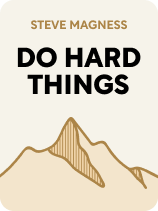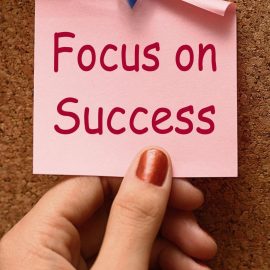

This article is an excerpt from the Shortform book guide to "Do Hard Things" by Steve Magness. Shortform has the world's best summaries and analyses of books you should be reading.
Like this article? Sign up for a free trial here.
What are the best Do Hard Things quotes by Steve Magness? What does it really mean to be tough in a critical world?
Do Hard Things by Steve Magness debunks the “old-school” definition of toughness by replacing it with one that embraces self-improvement and building confidence. After reading his book, you’ll come away with a new perspective on what it means to have a thick skin.
Keep reading for the best Do Hard Things quotes with explanations.
The Most Memorable Do Hard Things Quotes
The way we think about toughness, according to Steve Magness, is all wrong. We traditionally define toughness as a combination of machismo, lack of emotion, and outward displays of dominance and control. But Magness claims that this “old-school” definition of toughness is harmful and that real toughness is defined by confronting reality, acknowledging your thoughts, feelings, and emotions, and using a multitude of strategies to cope with discomfort or adversity. In Do Hard Things, Magness provides a new, more accurate, and more effective way of thinking about toughness, which will help you overcome challenges and make better, more thoughtful decisions.
In this book, Magness explores why traditional ideas around toughness are not only ineffective but harmful. Then, he shares his ideas on what it really means to be resilient and provides strategies on how to overcome discomfort and adversity.
Let’s look at three Do Hard Things quotes that perfectly encapsulate Magness’s message.
“Real toughness is experiencing discomfort or distress, leaning in, paying attention, and creating space to take thoughtful action. It’s maintaining a clear head to be able to make the appropriate decision. Toughness is navigating discomfort to make the best decision you can. And research shows that this model of toughness is more effective at getting results than the old one.”
Magness claims that the first step in becoming a truly tougher person is understanding what old-school toughness gets wrong. One of the significant problems with old-school toughness is the notion that you can tackle any challenge through sheer force of will. Though this may work sometimes, tackling problems this way will eventually cause most people to burn out or give up entirely. When facing a difficult challenge, instead of plowing ahead, it’s better to slow down, orient yourself, and make thoughtful decisions on how to best move forward. There’s more than one solution to your problems, and real toughness is about finding a solution any way you can, not pushing yourself past your limits.
The reason simply fighting through any challenge doesn’t work, according to Magness, is that eventually the stress of the fight will become too much, and you’ll give up. Therefore, Magness argues that the key to toughness is learning how to navigate the inner turmoil you experience when dealing with stress. The more stressful a situation, the more likely that the approach of fighting through the pain will eventually lead you to take the easy way out and listen to the part of you that wants to quit or panic. But if you can train yourself to slow down and recognize what’s happening within you, you can create enough space to make the best decision instead of the easiest one.
“True confidence is quiet; insecurity is loud.”
Magness argues that to properly face reality, you must develop inner confidence based on a realistic understanding and acceptance of your abilities. Confidence is important because it keeps your insecurities or doubts from taking over when you face difficult situations. When we doubt ourselves, we may feel we aren’t capable of accomplishing the task at hand. Old-school toughness is more concerned with the appearance of confidence, which isn’t based on reality and thus doesn’t help when doubts and insecurities arise.
The self-esteem movement of the ’80s and ’90s is an example of how false confidence can be harmful. People constantly told their children that they were special and that they could achieve anything they put their minds to. But this ideology leads to overconfidence—people believing they’re more capable than they actually are. When this overconfidence meets reality, it can be discouraging and demotivating to realize that you’re not as capable as you believed. To counteract such false confidence, we should focus on gaining real experience and understanding our capabilities.
In order to build inner confidence, Magness provides the following advice:
Shoot for consistency, not all-time highs: Many people base their confidence on their highest achievements—the highest grade they got on a calculus test or the most points they scored in a basketball game. But judging yourself based on your best performance leads you to hold yourself to unrealistic standards, and when you inevitably fail to live up to those standards, it can be demoralizing. Instead of seeking to improve your best performance, look to achieve a higher average. This will lead you to be more confident in your abilities.
Accept your weaknesses: Confidence isn’t only about acknowledging what you’re good at, it’s also about knowing you can be good at things even if you have weaknesses. Magness says that if you only focus on your strengths, you aren’t accurately evaluating your capabilities. Real confidence is about believing in yourself despite your weaknesses.
“A quiet ego is about keeping ourself in balance—coming to terms with the need for confidence, but being keenly aware of the strengths and weaknesses of ourselves and our situation. It’s being open and receptive to others, instead of defensive and closed off. It’s having the ability to zoom out, gain perspective, and understand that a short-term loss is often part of a long-term gain.”
Magness states that true toughness is about learning to deal with pain or discomfort, whether it be mental, physical, or emotional. This means being flexible—broadening or narrowing your focus depending on the situation. Magness claims that the toughest people—those who can thrive in the face of adversity—know when to shift between a broad and narrow state of mind. On the other hand, the only strategy of old-school toughness is to fight against pain and push through. This approach focuses your attention only on the specific task you’re currently working on.
Sometimes, Magness points out, narrowing your focus is the best strategy. In times of stress, this is advantageous because it allows you to focus intensely on the task you need to accomplish. But, as we’ve discussed, most people can only do this for so long before their negative thoughts spiral and they give up, panic, or make poor decisions. When narrowing your focus is your only strategy, it limits your options—when your attempt doesn’t work the first time, your only option is to try again. You need to be able to try something different instead of doubling down and wasting your effort.
When narrowing your focus fails, when you feel on the verge of giving up or panicking, you must be able to zoom out and take on a new perspective. This approach allows you to take in more information, be more creative, and avoid the pitfalls of narrowing your attention. For instance, if you’re freaking out about an upcoming presentation, it may be better to zoom out and think about how unimportant your presentation is in the grand scheme of things rather than fixate on the presentation or your anxiety. The key, however, according to Magness, is learning when to broaden and narrow and being able to shift your focus and attention at will.
Let’s say you’re an ambulance driver trying to get a patient to the hospital as fast as you can. When everything is going according to plan, you can zoom in and focus on driving your chosen route as quickly and safely as possible. But if you hit an unexpected traffic jam, you need to zoom out, take in your surroundings, and come up with a new plan. Perhaps you realize you can cut through a parking lot, backtrack a few hundred meters, and take a side road that will get you to your destination quicker.

———End of Preview———
Like what you just read? Read the rest of the world's best book summary and analysis of Steve Magness's "Do Hard Things" at Shortform.
Here's what you'll find in our full Do Hard Things summary:
- Why the "old-school" way we think about toughness is wrong
- Why machismo ideals are harmful and ineffective
- How to become resilient and versatile, and how to overcome adversity






